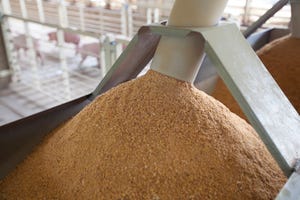October 7, 2013

We’re not real sure what we are “Previewing” this week, since hardly any of the numbers that we use are available. There are no Production and Price Summary tables this week for good reason. I suppose you producers are feeling that impact in spades and it doesn’t appear that the end is in sight.
The federal government shutdown, of course, has nothing to do with our business, but will have more and more profound impacts each day it drags on. “You never know how much something means until it is gone” certainly applies to this situation. We criticize, nitpick and fume with the U.S. Department of Agriculture (USDA) over its data, but when there is nothing to criticize, nitpick and fume over, we see just how valuable those data are. Now it is possible to be both critical and appreciative, and we probably ought to pay more attention to those attitudes in our everyday dealings with USDA. I hope that we do so in the future even if we haven’t done so in the past.
The situation as it stands is this: The price reporting function of USDA’s Agricultural Marketing Service has not been deemed “critical” and is thus shut down until further notice. The last data published under mandatory price reporting for hogs and pork was Monday, Sept. 30. The “reports” for that day cannot be accessed but the data for that day – at least those data that were published that day – can be accessed at http://mpr.datamart.ams.usda.gov/. At least one teeny part of the government is still working.
I have not looked at all of the data currently generated by this site, but I do know that one item (report volume for negotiated wholesale pork cuts) looked pretty screwy this morning in that every weekly number was the same for January through July. So be a bit cautious about the results of any searching you do at the Datamart site.
Three Points to Ponder
So what is happening in the meantime?
First, the rumors you have heard about an attempt to establish a temporary, voluntary reporting system are true. We don’t know yet when the effort might come to fruition but it is ongoing. To say the least, the idea is technically and legally complex.
Second, the practice of using the last available price quotes (ie. from Sept. 30) appears to be over. A number of packers had used those quotes last week, but quite understandably now feel those quotes are pretty stale relative to where true market values might be. I think that is especially true due to the time of year. Hog prices usually fall as hog supplies grow in October. Of course, we don’t know for sure that hog supplies grew last week since we have no slaughter data either! But it’s still a pretty safe bet.
Third, it appears that the most popular choices are, for now, the price of the nearby October CME Lean Hog futures contract and price data from Urner Barry, the long-time publisher of The Yellow Sheet. Tyson and Smithfield have announced they will use the Lean Hogs quote this week, and Cargill has announced it will use a quote from Urner Barry.
There aren’t many other options at present but the situation with the Lean Hogs demonstrates the quandary that everyone is in. The Lean Hogs futures contract has a couple of real strengths in a) being traded in an open, transparent, public market and b) being accessible to anyone who wants to basically bet money on what the cash hog price will be at a future date. The key future date in question, of course, is next Monday, Oct. 14 when the October contract expires.
But Tyson and Smithfield are using a futures price that is the consensus bet of what a cash price, that is not being published might be next Monday, when it still might not be published. It is tough to determine what the basis is when the futures price is determining the cash price. I’m not picking on Tyson and Smithfield here. They don’t have any real good options. I’m just saying that this is probably not a good, long-term solution, a fact that I think both companies acknowledge when they reportedly limited the practice to this week.
What does this say about government-sponsored price reporting? Not much good from a reliability standpoint but, again, what alternative is there? Private reporting is always suspect to some degree, and packers can hardly work together to do any reporting due to risks of running afoul of antitrust laws. A cooperative such as the beef industry’s CattleFAX can clearly work, but it takes time to build the necessary systems and reputation, and you must be recognized as a Capper-Volsted Act cooperative to have the antitrust immunity offered to cooperatives.
Bottom line: It’s not a good situation at all for hog producers. And it is not just hog data that are in peril. USDA announced this morning that it would not issue this week’s Crop Production and World Agricultural Supply and Demand Estimates (WASDE) reports. Nothing like driving blind, huh?
About the Author(s)
You May Also Like





